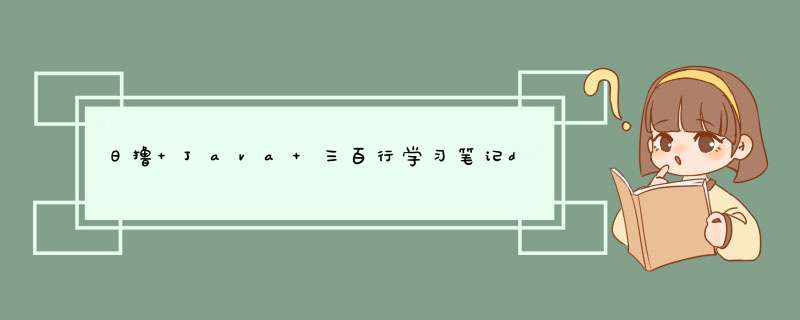
K- Means聚类算法:
K- Means是迭代动态聚类算法中的一种,其中K表示类别数,Means表示均值。
顾名思义K-Means是一种通过均值对数据点进行聚类的算法。K-Means算法通过预先设定的K值及每个类别的初始质心对相似的数据点进行划分。并通过划分后的均值迭代优化获得最优的聚类结果。
K- Means算法的关键问题
K值的选择
K值是聚类结果中类别的数量。简单的说就是我们希望将数据划分的类别数。K值决定了初始质心的数量。K值为几,就要有几个质心。
选择最优K值没有固定的公式或方法,需要人工来指定,建议根据实际的业务需求,或通过层次聚类(Hierarchical Clustering)的方法获得数据的类别数量作为选择K值的参考。这里需要注意的是选择较大的K值可以降低数据的误差,但会增加过拟合的风险。
算法总结来说就是:
(1)、第一步是为待聚类的点寻找聚类中心;
(2)、第二步是计算每个点到聚类中心的距离,将每个点聚类到离该点最近的聚类中去;
(3)、第三步是计算每个聚类中所有点的坐标平均值,并将这个均值作为新的聚类中心。
反复执行(2)、(3),直到聚类中心不再进行大范围移动或者聚类次数达到要求为止。
其实这个方法算是我听直播课理解最好的一个方法了,可能跟老师开头的直观图像解释有很大关系,让我比较清晰的就理解了大致过程。
我们的代码里就设置的numClusters = 2;前面的成员变量设置,读文件包括之前已经写过的getRandomIndices(int paraLength)方法和算距离的distance(int paraI, double[] paraArray)方法就不再赘述。
代码的最重点就是在clustering()里:
/**
*******************************
* Clustering.
*******************************
*/
public void clustering() {
int[] tempOldClusterArray = new int[dataset.numInstances()];
tempOldClusterArray[0] = -1;
int[] tempClusterArray = new int[dataset.numInstances()];
Arrays.fill(tempClusterArray, 0);
double[][] tempCenters = new double[numClusters][dataset.numAttributes() - 1];
// Step 1. Initialize centers.
int[] tempRandomOrders = getRandomIndices(dataset.numInstances());
for (int i = 0; i < numClusters; i++) {
for (int j = 0; j < tempCenters[0].length; j++) {
tempCenters[i][j] = dataset.instance(tempRandomOrders[i]).value(j);
} // Of for j
} // Of for i
int[] tempClusterLengths = null;
while (!Arrays.equals(tempOldClusterArray, tempClusterArray)) {
System.out.println("New loop ...");
tempOldClusterArray = tempClusterArray;
tempClusterArray = new int[dataset.numInstances()];
// Step 2.1 Minimization. Assign cluster to each instance.
int tempNearestCenter;
double tempNearestDistance;
double tempDistance;
for (int i = 0; i < dataset.numInstances(); i++) {
tempNearestCenter = -1;
tempNearestDistance = Double.MAX_VALUE;
for (int j = 0; j < numClusters; j++) {
tempDistance = distance(i, tempCenters[j]);
if (tempNearestDistance > tempDistance) {
tempNearestDistance = tempDistance;
tempNearestCenter = j;
} // Of if
} // Of for j
tempClusterArray[i] = tempNearestCenter;
} // Of for i
// Step 2.2 Mean. Find new centers.
tempClusterLengths = new int[numClusters];
Arrays.fill(tempClusterLengths, 0);
double[][] tempNewCenters = new double[numClusters][dataset.numAttributes() - 1];
// Arrays.fill(tempNewCenters, 0);
for (int i = 0; i < dataset.numInstances(); i++) {
for (int j = 0; j < tempNewCenters[0].length; j++) {
tempNewCenters[tempClusterArray[i]][j] += dataset.instance(i).value(j);
} // Of for j
tempClusterLengths[tempClusterArray[i]]++;
} // Of for i
// Step 2.3 Now average
for (int i = 0; i < tempNewCenters.length; i++) {
for (int j = 0; j < tempNewCenters[0].length; j++) {
tempNewCenters[i][j] /= tempClusterLengths[i];
} // Of for j
} // Of for i
System.out.println("Now the new centers are: " + Arrays.deepToString(tempNewCenters));
tempCenters = tempNewCenters;
} // Of while
// Step 3. Form clusters.
clusters = new int[numClusters][];
int[] tempCounters = new int[numClusters];
for (int i = 0; i < numClusters; i++) {
clusters[i] = new int[tempClusterLengths[i]];
} // Of for i
for (int i = 0; i < tempClusterArray.length; i++) {
clusters[tempClusterArray[i]][tempCounters[tempClusterArray[i]]] = i;
tempCounters[tempClusterArray[i]]++;
} // Of for i
System.out.println("The clusters are: " + Arrays.deepToString(clusters));
}// Of clustering
分部解析:Step 1. Initialize centers.
利用getRandomIndices()将tempCenters[][]这个二维数组打乱。接下来就是一个while循环
相当于就是对比之前的一个和现在的一个这些数据所在簇是不是不再变化了,使其达到稳定再跳出。
Step 2.1 Minimization. Assign cluster to each instance.
这一步就相当于让每一个instance去找老大,找自己所在的簇。把找的簇的编号赋给tempNearestCenter,再tempClusterArray[i] = tempNearestCenter,使得tempClusterArray[]里每个instance所在簇依次排列好。
Step 2.2 Mean. Find new centers
在从新归好类之后,我们相应的又要根据归好的类寻找新的中心了。
其实呢核心就是这一句,就是一个二维数组,将每一个instance需要按照他所在的簇存在不同行,不同的value 值存在不同列。之后tempClusterLengths[tempClusterArray[i]]++则是相当于分子加了,分母也要相应的加。最后算平均值得出的就是算出的新的中心。
Step 3. Form clusters.
就是将一维数组转换成二维数组,两个是等价的。二维的当然更具体。
最后贴上运行结果:
总的来说,做这一部分,对间接地址的使用,数组的理解,感觉最为重要,固然方法是根本。
欢迎分享,转载请注明来源:内存溢出

 微信扫一扫
微信扫一扫
 支付宝扫一扫
支付宝扫一扫
评论列表(0条)